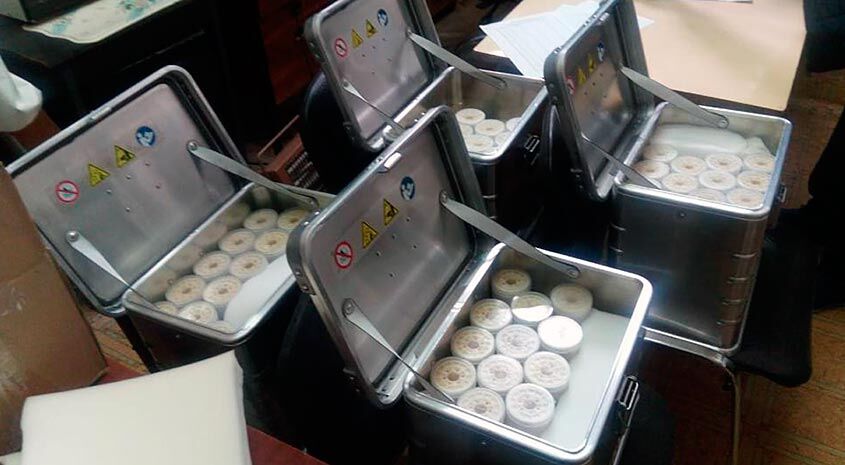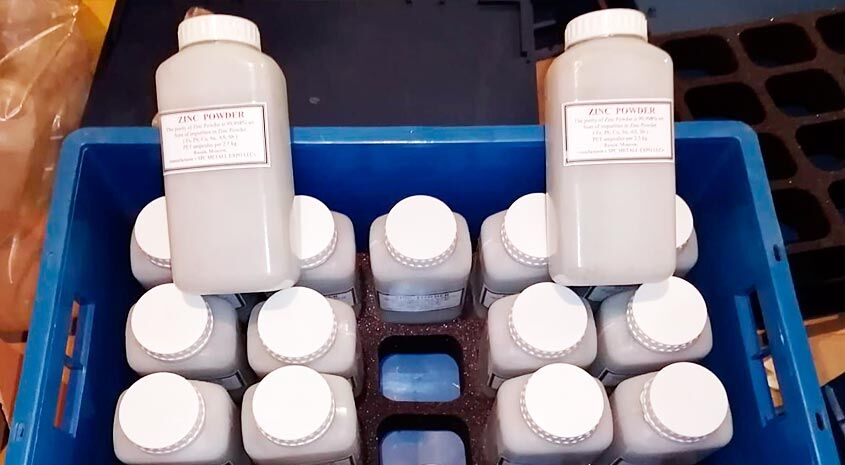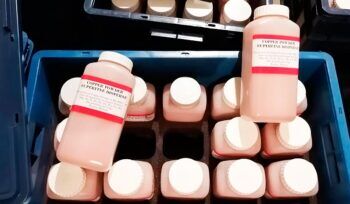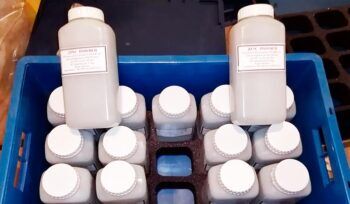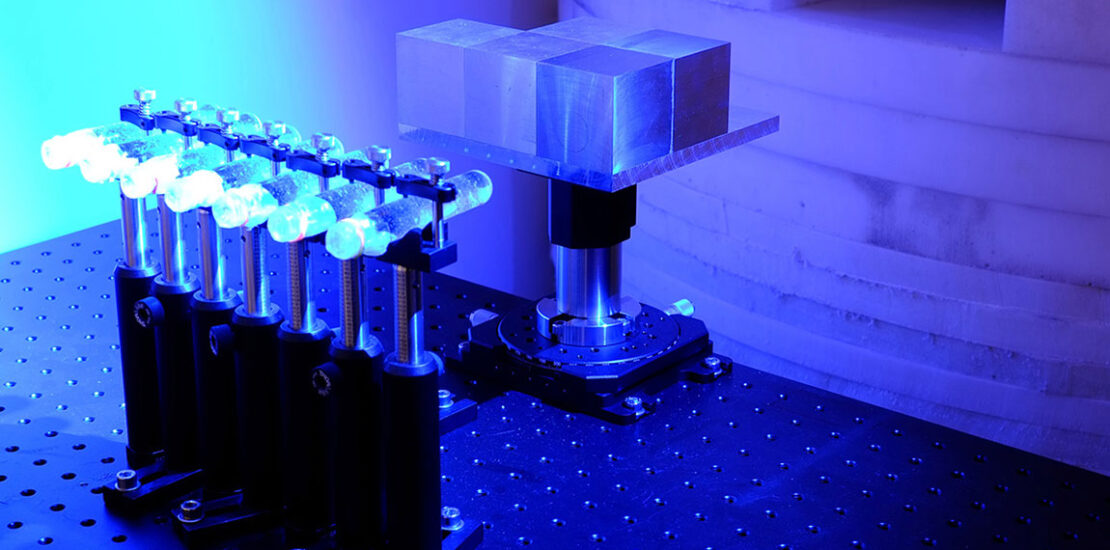
Oxides of rare earth elements
Scandium, yttrium and lanthanides have a high reactivity. The chemical activity of these elements is especially noticeable at elevated temperatures. When heated to 300-400 °C, metals react even with hydrogen, forming RH3 and RH2 (the symbol R expresses an atom of a rare earth element).
These compounds are quite strong and have a saline character. When heated in oxygen, metals easily react with it, forming oxides: R2O3, CeO2, Pr6O11, Tb4O7 (only Sc and Y by forming a protective oxide film are resistant to air, even when heated to 1000 °C).
During the combustion of these metals in an oxygen atmosphere, a large amount of heat is released. When 1 g of lanthanum is burned, 224.2 kcal of heat is released. For cerium, a characteristic feature is the property of pyrophoricity — the ability to sparkle when cutting metal in air.
Cerium dioxide
Cerium, lanthanum and other metals react with water and non-oxidizing acids at normal temperature, releasing hydrogen. Due to the high activity to atmospheric oxygen and water, pieces of lanthanum, cerium, praseodymium, neodymium and europium should be stored in paraffin, the rest of the rare earth metals are poorly oxidized (with the exception of samarium, which is covered with a film of oxides, but not completely corroded by it) and they can be stored under normal conditions without antioxidant substances.
The chemical activity
The chemical activity of rare earth metals varies. From scandium to lanthanum, the chemical activity increases, and in the lanthanum—lutetium series, it decreases. It follows that the most active metal is lanthanum. This is due to a decrease in the radii of the atoms of the elements from lanthanum to lutetium on the one hand, and from lanthanum to scandium on the other.
Lanthanide contraction
The effect of “lanthanide contraction” (compression) leads to the fact that the elements following after lanthanides (hafnium, tantalum, tungsten, rhenium, osmium, iridium, platinum) have reduced atomic radii by 0.2-0.3 Å hence their very similar properties with the properties of the corresponding elements of the fifth period.
In the elements – scandium, yttrium, lanthanum – the d-shell of the penultimate electron layer is just beginning to form, so the radii of atoms and the activity of metals in this group increase from top to bottom. By this property, the group differs from other secondary subgroups of metals, in which the order of activity changes is the opposite.
Since the radius of the yttrium atom (0.89 Å) is close to the radius of the holmium atom (0.894 Å), this metal should occupy one of the penultimate places in terms of activity. Scandium, because of its activity, should be located after lutetium. In this series, the effect of metals on water is weakened.
Oxidation state
Rare earth elements most often exhibit an oxidation state of +3. Because of this, R2O3 oxides are the most characteristic — solid, strong and refractory compounds. Being basic oxides, for most elements they are able to combine with water and create bases – R(OH)3. Hydroxides of rare earth metals are slightly soluble in water. The ability of R2O3 to combine with water, that is, the main function, and the solubility of R(OH)3 decrease in the same sequence as the activity of metals: Lu(OH)3, and especially Sc(OH)3, exhibit some properties of amphotericity. So, in addition to a solution of Sc(OH)3 in concentrated NaOH, a salt was obtained: Na3Sc(OH)6 ·2H2O.
Since the metals of this subgroup are active, and their salts with strong acids are soluble, they easily dissolve in both non-oxidizing acids and oxidizing acids.
All rare earth metals react vigorously with halogens, creating RHal3 (Hal — halogen). They also react with sulfur and selenium, but when heated.
Our products are high purity metals always in stock

